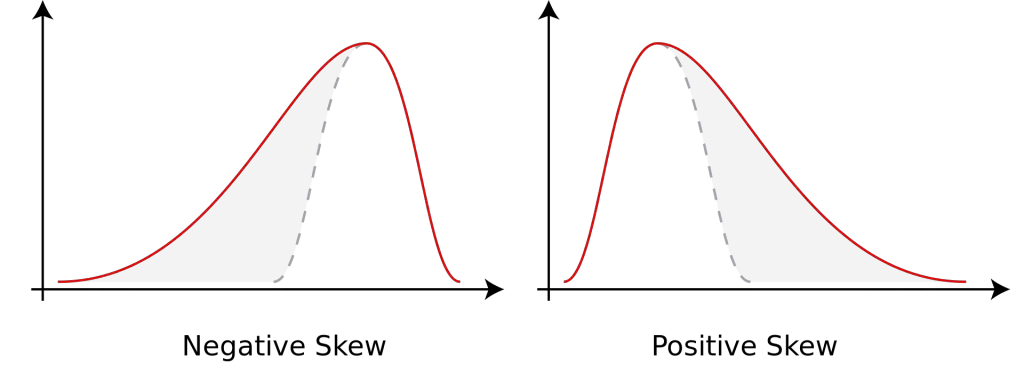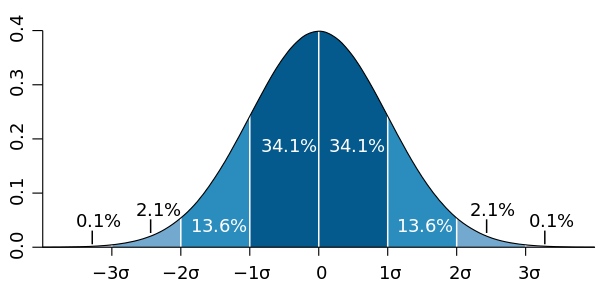What is the difference between positive skew versus negative skew? Skewness is the measurement of a a coefficient that has the ability to be positive, negative or neutral (zero). The coefficient of the skew is the measurement of the magnitude of the symmetry in the distribution of outcomes of a specific data set of occurrences.
The skewness enables traders and investors a way to quantify where the majority of outcomes fell for returns, risks, trades, and stocks in the past inside a probability curve. A skew can also show the frequency of low probability but high magnitude outlier events (Black Swans) if there are fat tails in either end of the chart. The images below are a graphic representation of outcomes, this can be monthly investment returns for a portfolio, trade profitability and losses, or individual stock returns. The skew is the direction that the curve is tilted in for degree of outcomes, one chart showing more negative outcomes (negative skew) and one chart showing more positive outcomes (positive skew).

If the left tail is noticeably smaller at the end of the distribution than the the right larger tail end of the distribution, the data sample shows a negative skew. When the opposite is seen then it is a positive skew. When the two tails are equal in size meeting in the middle of the data set then it has zero skew and a symmetric outcome distribution.
By analyzing the skew of historical price action, trading signals, stock performance. or return samples it can help determine where future outcomes could fall. While skewness does not predict the future it can make better projections about the probabilities of certain outcomes going forward. A skew can also show fat tails at the edges of the data sample showing what can happen and alert you to outsized profits and risk events.
A measurement of the skewness of a data set shows if the potential deviations from the mean will be more positive or negative on average.
Below is a normal, perfectly symmetrical distribution with no skew.
